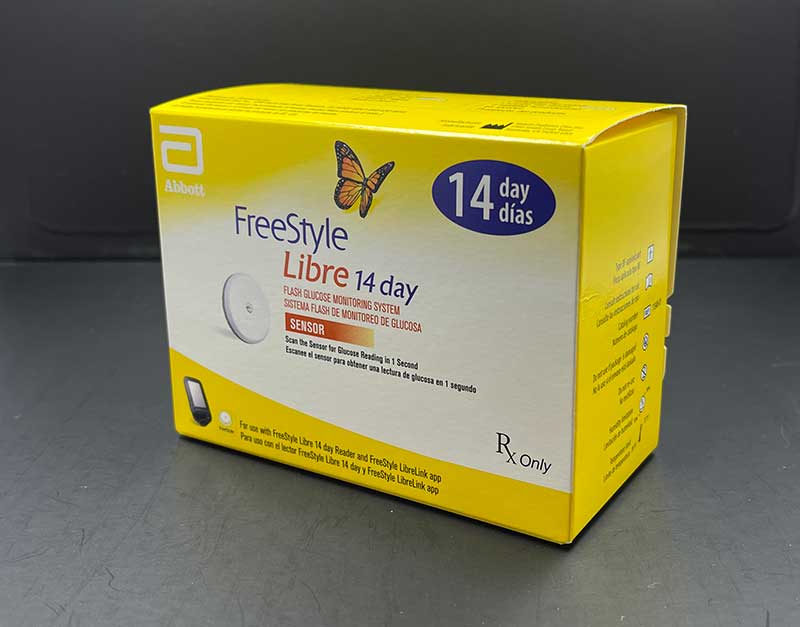
REVIEW – All diabetics know that they have to keep an eye on their blood glucose levels. They can do this with a blood glucose meter which requires a finger stick to draw a drop of blood. You can imagine how much of a hassle and pain it is to use this method several times a day. Another way to keep track of your glucose levels with a glucose monitoring system that uses a sensor that you stick on your body. Today I’m going to tell you about the FreeStyle Libre 14 day flash glucose monitoring system from Abbott.
What is it?
The Abbott FreeStyle Libre 14 day is a flash glucose monitoring system that uses a wireless sensor that is inserted into your arm and wirelessly transmits your blood glucose level on demand to your phone or a dedicated FreeStyle reader device.
A little history about me
After a routine physical in 2004 showed that I had a fasting blood sugar reading of 102, I was given an A1C test that came back with a 6.9% result which meant that I was a Type-2 diabetic. The American Diabetes Association and the CDC say that an A1C 6.5% and higher means that you’re diabetic. A reading of 5.7 – 6.4% means that you’re pre-diabetic and anything below 5.7% means that your blood glucose level is in the normal range.
A1C is a reading that is a person’s average blood glucose level during the past 3 months. It’s a better way to track overall trends instead of just doing finger sticks because a finger stick only tells you the blood glucose reading at that exact time and can make a diabetic feel like they are on the right track when in reality their readings can be spiking really high the rest of the time.
The word diabetes wasn’t unknown to me or my family. My grandma on my mother’s side died of complications from the disease, my mother died of complications from it at age 58, my niece became a Type-1 diabetic at a very young age, and my dad developed Type-2 diabetes in his 70’s.
The moment I found out that I was diabetic, I immediately quit eating sugary foods and drinks. Let’s put it this way, my diet back then was crap. My idea of breakfast was a cinnamon sugar pop tart and a regular Coke. Lunch wasn’t much better. I often ate a candy bar, a bag of chips, with another regular Coke.
Since I had grown up watching my mom struggle with the disease which ultimately took her life after multiple amputations and strokes. I did not want that for my own life so I kept a good handle on my diet and didn’t require any drugs to manage my diabetes. In fact, my A1Cs after the first one, have never been back into the full-blown diabetes range again, but I’ve remained in the prediabetes range all these years.
Then COVID hit and with my working from home restrictions, I found myself adopting some bad habits of having sandwiches, chips, and some type of sweet treat with every lunch. During this time I also was not checking my blood regularly. I still had a yearly (I should have been doing a quarterly) A1C test which remained below full diabetes. But with my bad habits, I decided to start testing my blood again and I was worried when I was seeing some higher than normal (for me) fasting glucose ranges. So I called my doc and asked for an A1C and found that it had gone from 5.7% from the year before to 5.9%. .2% might not sound like a huge jump, but I’m motivated by data and that was enough for me to get strict with my diet once more. AND, then my health care provider said that I could have a free FreeStyle Libre system and I was super excited about it for 2 reasons. The first reason was that my day job covered all the charges, and the second reason is that I wouldn’t have to stick my fingers again!
What’s in the box?
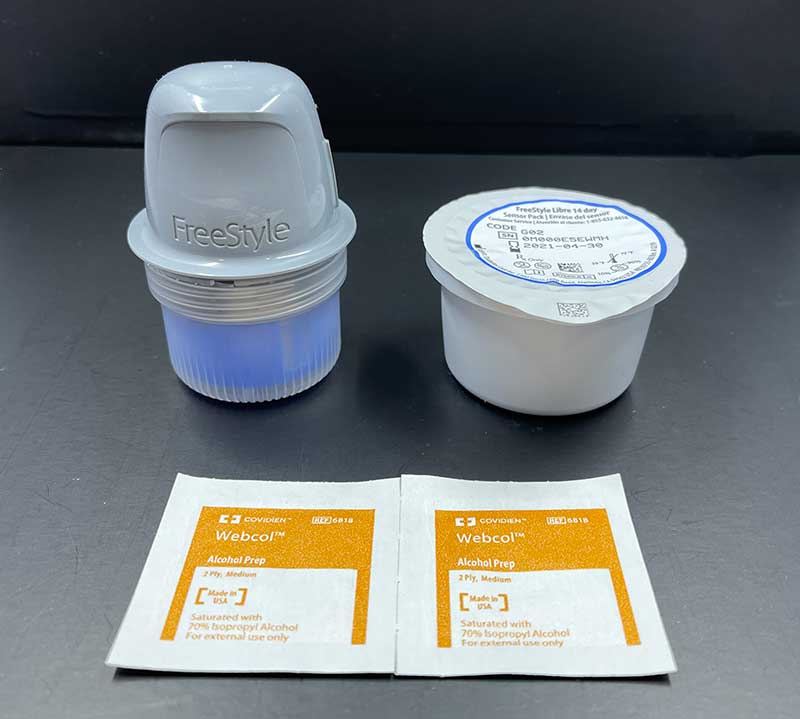
- FreeStyle Libre 14 day sensor
- Applicator
- Alcohol wipes
- Instructions
Design and features
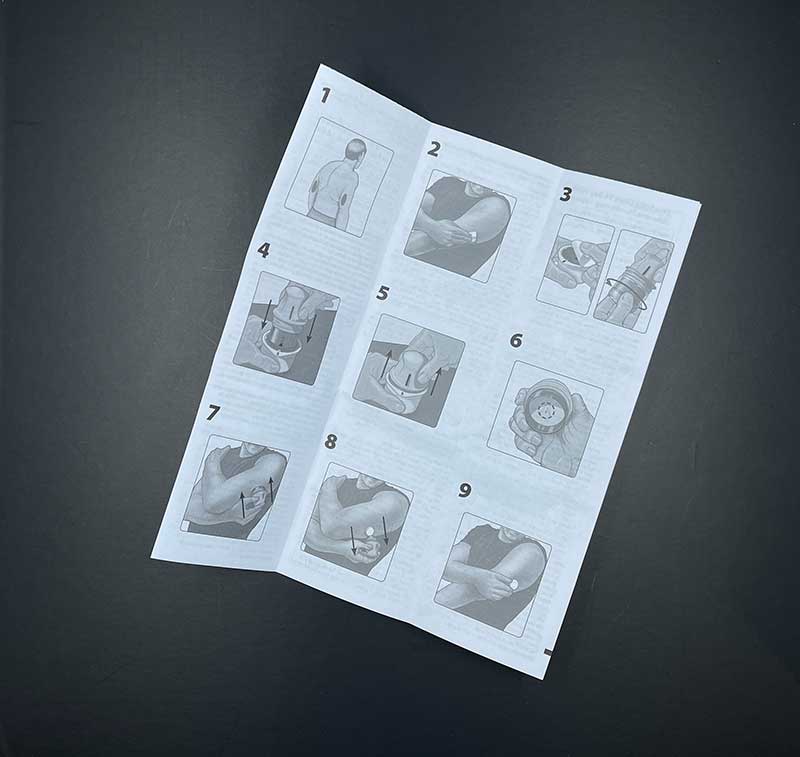
To use the FreeStyle Libre system, you have to insert/install the sensor on the back of your arm. The kit comes with a pictorial guide that is easy to understand. Basically, you make sure your arm is clean (I scrub it in the shower first) and wipe it down with the included alcohol wipes.
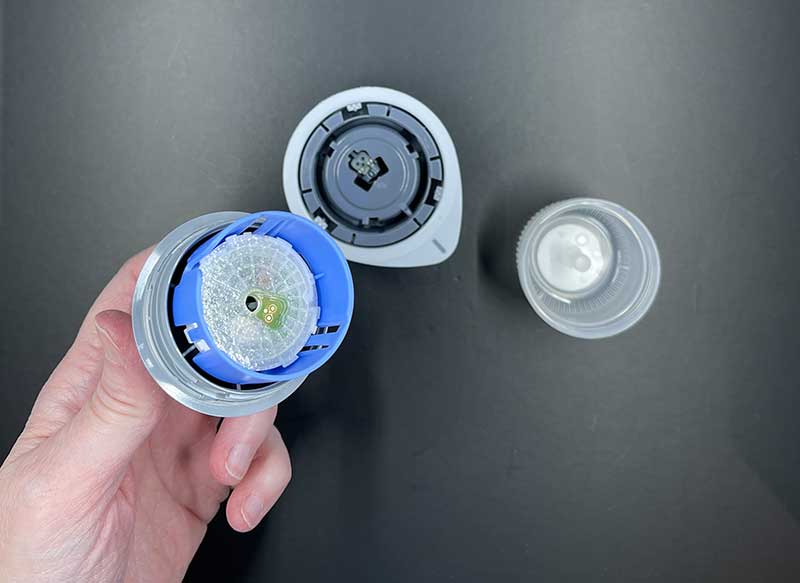
Then you open the sensor packet and remove the applicator.
You can then snap the applicator into the sensor container.
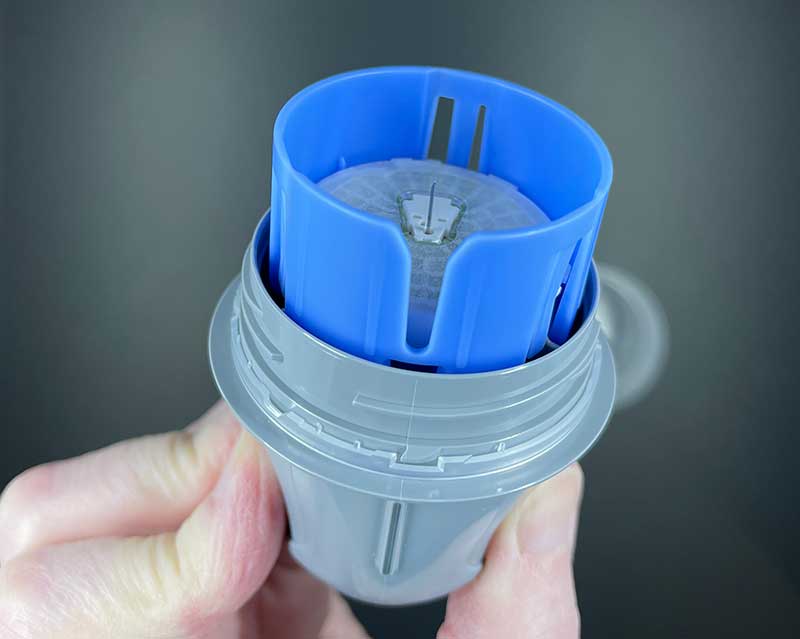
When you remove the applicator, the sensor is in position and ready to be inserted into your arm. The first time I looked at the sensor I immediately got a little nervous seeing the 1/4 inch long needle poking out of it. I thought “is that thing going in my arm?!” I was a little anxious but I told myself that I am tough and that no little needle is going to get the best of me! I pushed the applicator to the back of my arm and the spring-loaded mechanism did its job and placed the sensor.
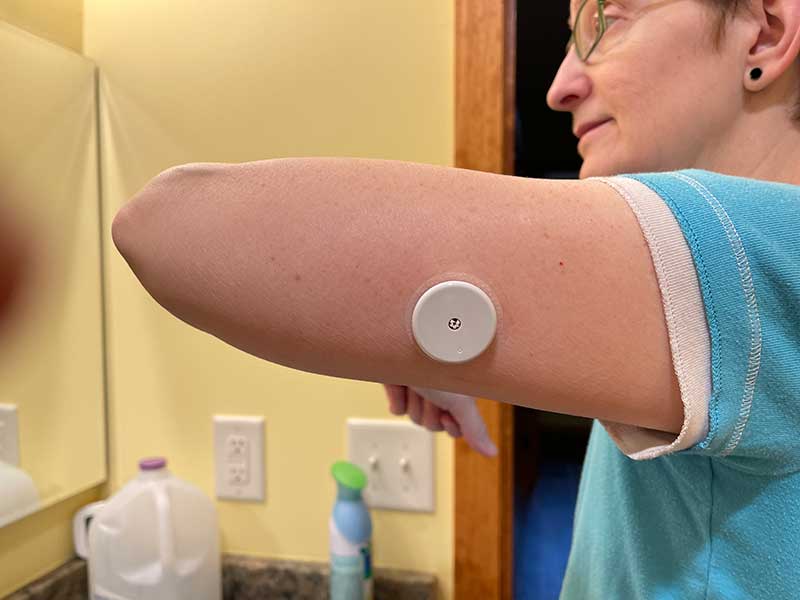
After it was done, I was relieved that it wasn’t that bad. I won’t say that it was completely painless because it did feel like I was given a shot. It stung a little bit but not bad at all. If you get a flu shot every year, it probably felt half as bad as that.
As you can see in the image above, the sensor is a little larger than two stacked quarters. Abbott suggests that you put the FreeStyle Libre sensor on the back of your arm because it’s out of the way and shouldn’t get knocked off by accident.
Note that the sensor has strong adhesive around the sensor and under the sensor that allows it to stay firmly on your skin even when you’re showering, exercising, etc. I was concerned about the adhesive because I’ve had issues with different types irritating my skin. If you have similar issues, there are different things you can do to minimize skin irritations.
Let’s scan!
FreeStyle has a reader device that you can use to scan the sensor for your glucose readings, but you can also use your phone and the FreeStyle app, which is what I did.
Whenever you install a new sensor, you have to scan it with the app before it can be used. Actually, you have to scan it and wait 60 minutes before you can do your first scan. During the first hour, the sensor is “warming” up.
After that first hour has passed, you can start scanning the sensor with your phone anytime that you want to see your blood glucose % reading. You just tap the scan button in the app and then place the top edge of the phone up to the sensor on your arm and you’ll hear a tone and a vibration to let you know that the scan scan is done. You can then check the reading.
It is important that you understand a few things about readings from the sensor. Unlike your blood glucose meter which reads your glucose level from a drop of blood, the FreeStyle Libre gets is info from interstital fluid. This is the fluid that surrounds the cells of your tissue below your skin. Glucose moves from your blood vessels and capillaries first and then into your interstitial fluid. This means that the readings from the FreeStyle Libre sensor can be 10 – 15 minutes behind the readings of a finger stick reading. So you can’t get a reading from a blood drop and immediately expect to see the same reading when you scan the sensor on your arm.
If you look at the 2nd image above on the right, you’ll see a list of scans and you’ll see a magnifying glass with a blood drop icon. You can expect to see this icon for the first 12hrs or so after you install a new sensor. I think the sensor is calibrating during this time. I know that I stopped seeing those icons the next day.
The Freestyle LibreLink app will show you a graph of your blood glucose readings over the past 8hrs. It’s important to scan at least once every 8hrs because if you forget, you’ll see gaps in the graphs like the small break that you see in the image above on the right.
The app isn’t quite as robust as I’d like. Although the sensor is recording a reading every few minutes, you can’t get the exact readings list. All the app will let you see is a graph. It does offer info about trends, averages, time, in goal range, low readings, high readings, and how many times you’ve scanned.
Removing the sensor
The FreeStyle Libre has to be replaced every 14 days. Removing it is like trying to remove duct tape which means that you probably should shave the area where you want to install it or it’s going to be ouchy when it’s time to remove it due to the adhesive.
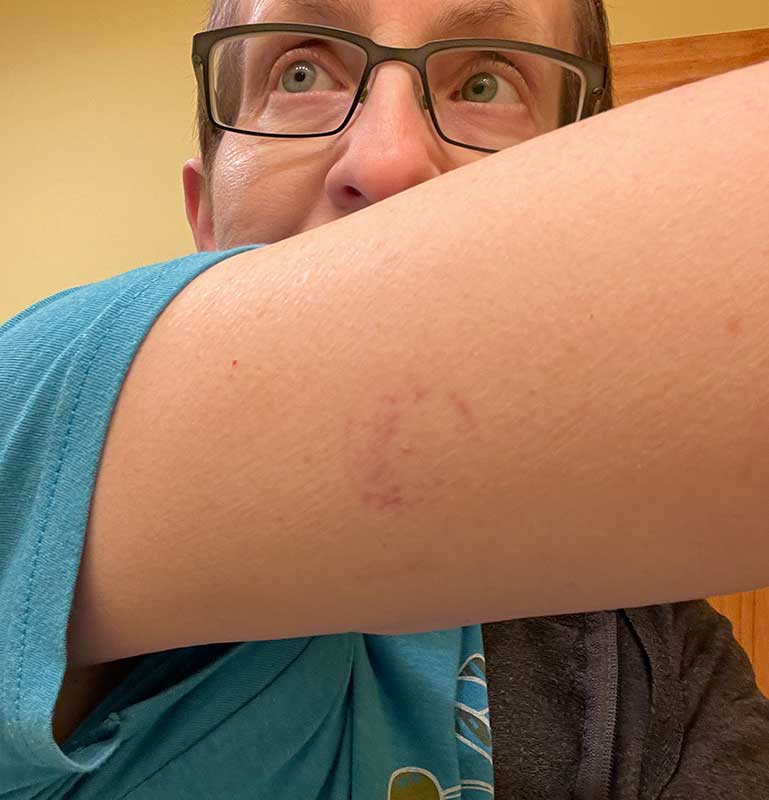
If you’ve read this far, you’ll remember that I said I was a little concerned about the adhesive causing skin irritations, I was happy to see that the irritation was minimal.
It’s important that you apply the next sensor in a different location that where the previous one was applied. So you can switch to the opposite arm or place it above or below the previous location.
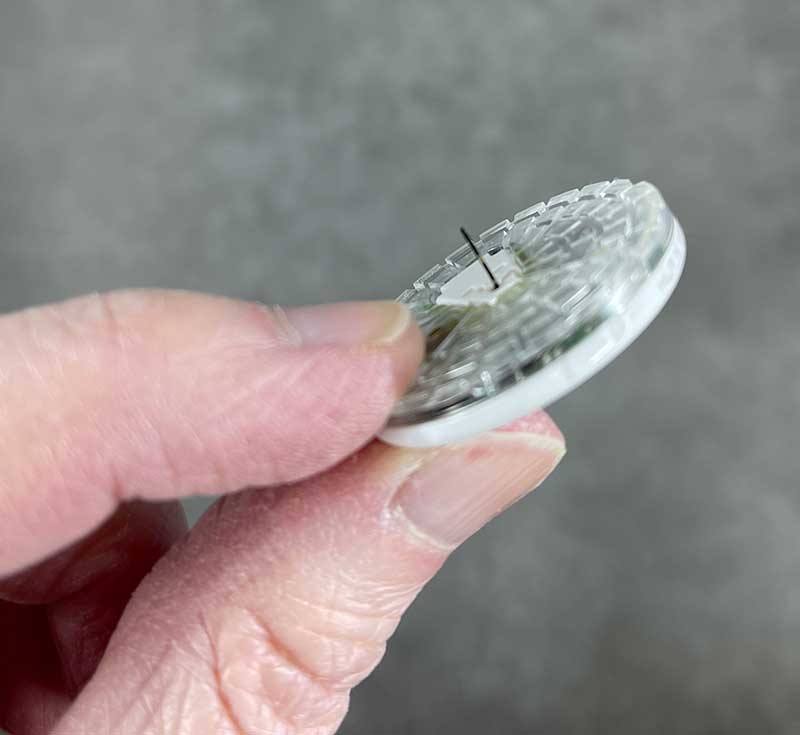
When I removed the sensor I looked closely at it and was surprised that the needle wasn’t there. I thought that the needle was in my arm the whole time and in reality, only a very thin and flexible filiment was in my arm.
What I like
- No more finger sticks!
- Sensor doesn’t need to be charged
- Don’t need to carry around a separate device because I can use my phone as the scanner
What I’d change
- Add more detail to the app or allow a full download of readings
- Last longer than 14 days
- Make a permanent one that I can embed under the skin!
Final thoughts
The FreeStyle Libre 14 day flash glucose monitoring system is a game-changer for diabetics. It has allowed me to understand which foods spike my blood sugar. I will test my blood before I eat something, 1 hour after I finished eating to see if the food spiked my glucose, and then once more 2 hours after the meal to see if my glucose levels are heading back down to the pre-meal level. It’s really eye-opening when you see how a cheeseburger, fries, ketchup, and a cookie can cause a blood sugar spike when you’re insulin resistant like I am (see that 246 reading above!). The FreeStyle has helped me keep my levels in my target zone of 70 – 180. I know that my next A1C will be significantly lower and maybe even in the non-diabetic range if I keep up my low carb eating habits.
Price: Talk to your doctor
Where to buy: Through your doctor and pharmacist
Source: The sample for this review was provided by Abbott.

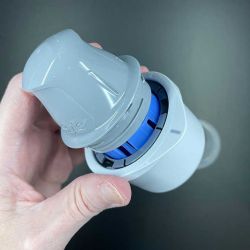
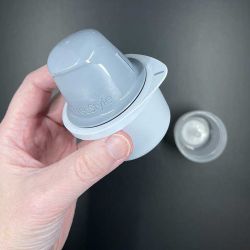

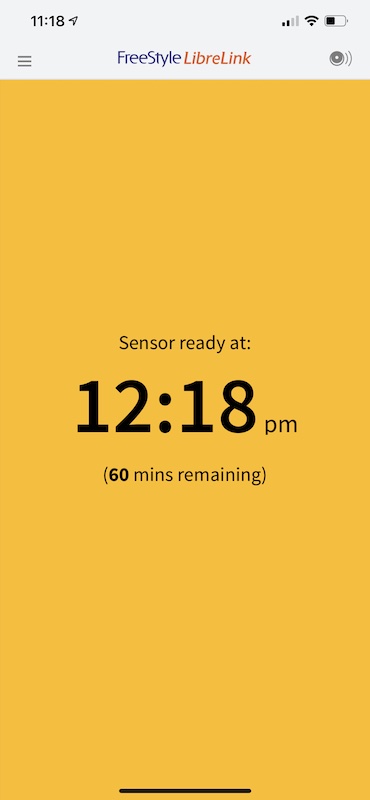
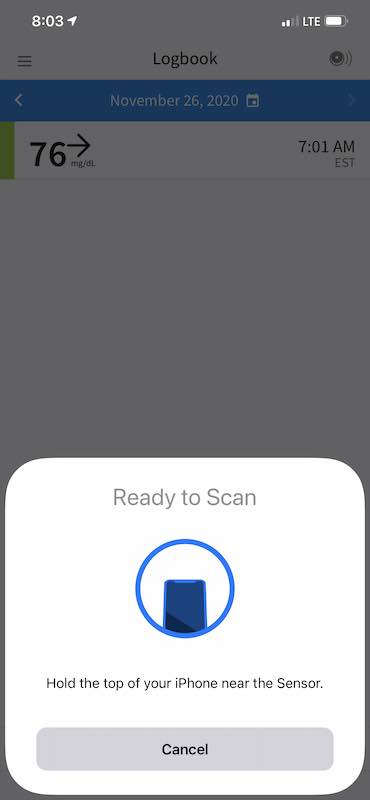
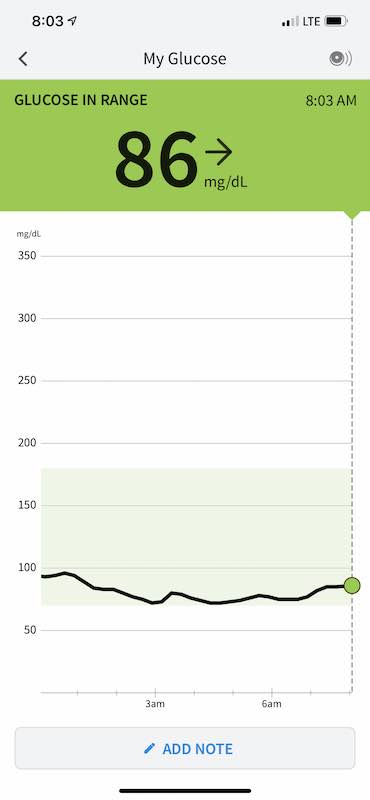
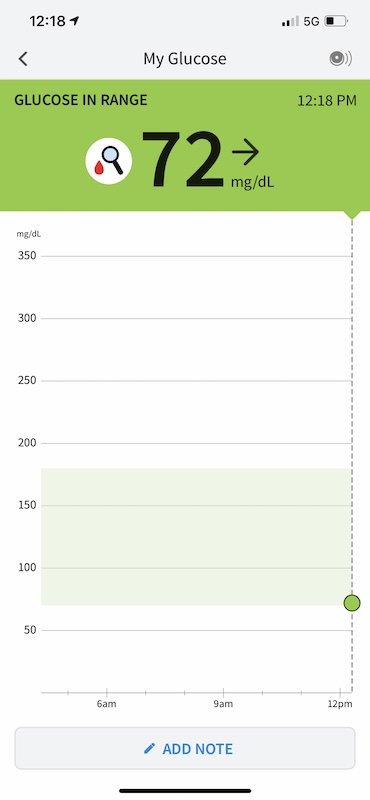
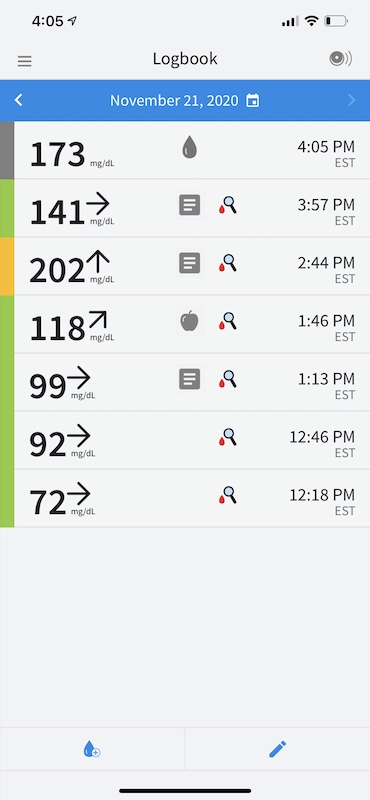
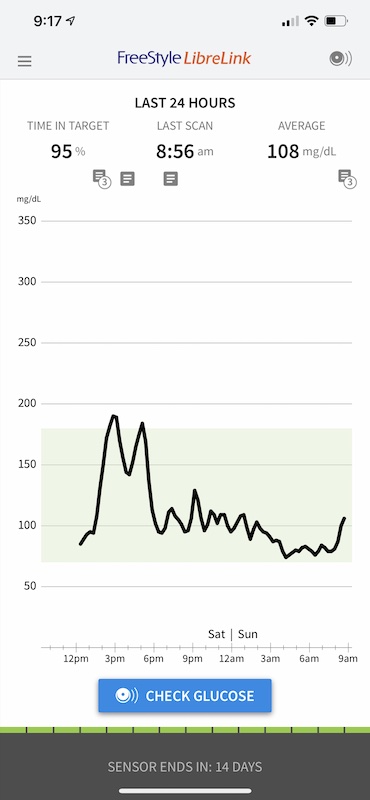
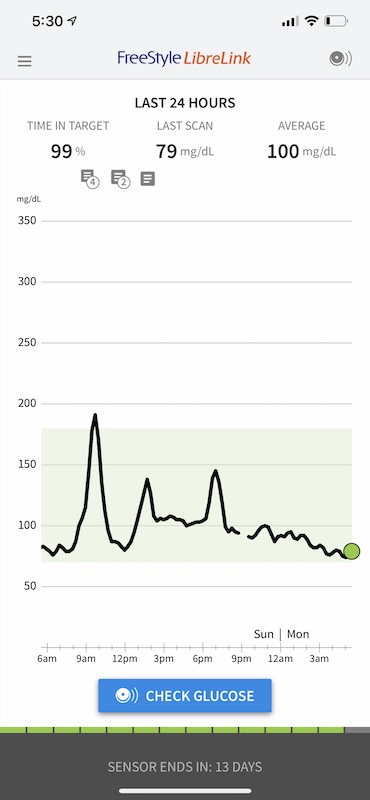
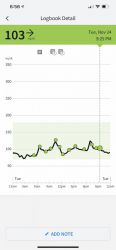
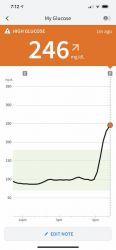
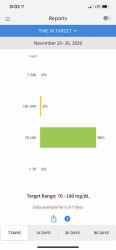
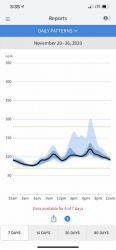
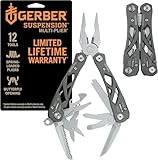

Gadgeteer Comment Policy - Please read before commenting
I have used the FreeStyle Libre for a few years now to track my type-II, and liked it, but I would forget to scan my sensor as often as I should.
Recently have been using the Dexcom G6. It is more expensive, but you don’t have to scan! It automatically sends your readings to your phone every 5 minutes and can alert you or someone you choose if your numbers exceed a given range. Literally a lifesaver in the middle of the night when my glucose would drop really low.
Not crazy about the expense since it’s not covered under the same program as the Libre was with my insurance, but after my deductible it’s not too bad. The main thing is the freedom from fingersticks AND sensor readings.
Would like to see longer life on the sensor and the adhesive is much harder to get off than the Libre. I also wear it on the back of my arm like the Libre, but that location was not submitted for approval in the US.
Just saw an article yesterday that you can get a trial kit of one 10-day sensor and a transmitter that normally lasts 90 days. You have to use your phone as a receiver, but most people will anyway. Go to http://www.dexcom.com/hello.
Dennis, thanks for the link, I’ll check out the Dexcom. Not sure they will send me a freebie without an order from a doc, but maybe. My niece is using the Dexcom because she’ll be getting an insulin pump soon and it works with it as far as I understand.
Hmm, the Dexcom link is assuming that you already have a sensor and it’s just trying to walk you through setting it up. I didn’t see a way to get one for free. Oh well.
Sorry, I tried to identify the direct link. This is the article I started down the rabbit hole with.
https://asweetlife.org/now-available-free-dexcom-g6-samples/
We had an alternative use for the Freestyle Libre: we used this on our dog. I think it was about a year or so ago, and it had just been approved for use on canines. Our vet prescribed it, and I picked it up at the pharmacy and took it to him for him to “install” on our dog. She had just been diagnosed with diabetes, so we were trying to figure out what her insulin dosage should be. This was so much better than having to prick the poor old girl constantly to get readings. We only used it once for 14 days to get her baseline. He suggested trying it again after a while, but she seems stable now. We prick her once in awhile if she seems off, but that’s it.
It never occurred to me that you could use this on a pet. Pretty cool.
We just became diabetic dog parents (after noticing that there was “excessive” (an understatement if ever there was one) water consumption), and our furry girl is now wearing a 14-day sensor to help us figure out the right insulin dosage. Her furry brother is jealous that she’s getting scanned, so we also wave the phone at him. Dogs can be so funny!
Just drizzle a little baby oil around the sensor when you need to take it off. It loosens the adhesive!
Thanks for the tip Michael!
Maybe someone can answer this.
Why are these things not “over the counter”, but you have to have a doctors prescription?
Afraid you’ll need to ask the FDA(?) that question. As a user, I would not like to pay over $1000 every few months out-of-pocket. Also, it would suck for an “entrepreneur” to buy up all of the stock at your local pharmacy and re-sell at a huge markup.
What is the relationship between A1C numbers and the measurement the Libre provides?
Doug, I should go back and talk about A1C… sorry, I assumed anyone reading this would be diabetic. A1C is a reading that is an average blood glucose level during the past 3 months. It’s a better way to track overall trends instead of just doing finger sticks because a finger stick just tells you the blood glucose reading at that exact time and can make a diabetic feel like they are on the right track when in reality their readings can be spiking really high the rest of the time.
I find a1c not to be accurate with me i have such swing a1c always looks normal and no where normal but that could just be with high and low spike it thinks it normal
WHEN WILL LIBRE 3 BE AVAILABLE IN THE USA
Roger, not sure. Do you know much about it other than it will be smaller? I hope the app will be updated too to show all the readings.
FYI Two sensors (a month supply) costs over $240.00 Cdn for those who do not have health benefits through their employer. Test strips are $80 per month (100 strips) based on 3 tests per day.
Jill, I’m sorry that you have to pay that much 🙁 I’m very fortunate to have really good benefits from my employer.
Just to clarify. There is no download of the glucose reading at all? How does your doc know then? Do you just show your doc the app on the phone?
There is a website that it will download to. In the app you can put in your medical provider’s ID and they will then be able to see your data and you can login to the Freestyle website to see the data on a bigger screen. BUT, you still can’t see the numbers for every reading it automatically takes. You can only see the readings that you’ve scanned. The rest of the data is just a graph. Hope that makes sense.
This may be a recent change, but I was able to see many more readings than the number of scans I’ve done (I’m another dog user, but I’m getting one for myself as well, since I’m diabetic and also a data nerd). The website allowed me to export a .csv file that appears to have readings every 15 minutes or so.
Andy, yes, you’re right about the website giving extra info. It’s just too bad that you can’t see the same level of data in the app.
Hi Julie,
Thank you for the detailed writing on this device. I have multiple siblings already living with Diabetic and I have been very careful with what I eat. My fasting glucose always under 100 so didn’t think I was in the Pre-diabetic range until recently tested A1C. I am looking for something that I can use to monitor how food affect my glucose and sounds like this is what I need to test out. Thank you so much.
Anyone else having trouble with the adhesive not lasting the full 14 days? I have never had it stay on past 10 days before it starts to fall off. I am on my fourth sensor. This is particularly challenging because it is a prescription item… and it cannot be refilled until 3 days out from the second sensor expiring.
Trent, you can call Abbott and complain that it came off and they will send you a new sensor. Also, there are some over patches that you can buy to stick over the sensor that can help it stay attached. I had 2 sensors partially detach but I had them on my stomach and the waistband of my pants would get caught on the bottom edge and I think that was the main problem. I haven’t had any problems with them on the back of my arm.
My reading from the libre 14 day are much lower then when I prick my finger ex. 80 with libre, finger stick 170 I spoke with libre 3 times and really haven’t gotten a solution. Rarely are two even close. Afraid to accept libre as accurate. Anyone have this problem?
Alex, did you know that there’s a 10 minute delay in readings between the Freestyle and a finger stick? Are you seeing these wide differences every day of the 14 day sensor cycle or just at the beginning?
In been trying to contact this company by phone which the number is bogus even on messenger I bought a sensor on wed,put it on and it says expired it costs to much to get replace and my my insurance won’t cover another pls contact me back.
Mary, I just called the number (855-632-8658) on their contact page and it picked up. I’ve used that number before to get a replacement for a sensor that fell off.
https://www.freestyle.abbott/us-en/support/contact-us.html
I really have not had a good experience using the Freestyle Libre 14. There are several issues actually but my biggest problem are the numbers. My blood sugars are high….170s to 250s and anywhere in between. The Freestyle Libre will show readings anywhere from 80 to 120. I think if my blood readings are 250 and the libre shows 100…something is wrong. I take medication based on my readings and if I were to use the libre readings I would not be taking any meds. With my blood being tested I for sure need my meds….so forget that “no more sticking” because I do it now more than ever ..comparing and also getting readings that use when it is time to take medication (like at each meal and my main slow insulin once every morning) I have met my deductible and this is not really costing me out of pocket right now (been using since February) and I keep hoping for better results but so far ..NO. I won’t be using them after this year because I’m not going to pay anything for this thing that does not work. Now…beside the wayyyyy offf readings the thing keeps falling off my arm. I have had some that have stayed the entire 14 days but usually fall off between 10 and 14 days or I have had one fall off after 3 days. I had a couple where the readings never got to 100…readings like 50 almost everytime and at a time my blood sugars were mostly around 200 every time I checked. I called and complained and was told there would be some percentage of discrepancy and because I was beyond that percentage they sent me a new one. When they fell off they sent me a new one. I now do not even call since I’m not depending on this thing..I just wait til the new months supply comes in. My doctor said my placement was correct. The help desk girl said to make sure I did not put it over moles, fat deposits, scars, etc. GET REAL?? Do I know where my fat deposits are under my skin on the back portion of my arms. I asked my husband to look real close for a mole or something I don’t see and he said it was all “skin” and he saw nothing that should be a problem. I drink plenty of water..always have so I’m not dehydrated. I just don’t see how my results are so off when some really like it. My doctor said never to use it for my meds, only to see how I react to foods I may eat….I have been diabetic for years now so I know what foods I can or can not eat so I don’t really need it to help adjust my diet. I would never spend a lot of money on this if your insurance does not cover it.
Robin, I’m sure you’re already aware that the FreeStyle Libre and other CGMs read your glucose levels from the interstitial fluid and not blood. Also, there is a time gap between blood sugar readings and CGM readings. But even with those two differences between just sticking your finger, it sounds like your readings are crazy different. For me, the FreeStyle is usually 20 points lower than my regular glucose meter. I’m using the sensors just to see how foods affect my levels, so I’m not using it to help me regular meds. I can see how you would be very frustrated.
I had wildly erratic readings with the FreeStyle before I learned a “trick”. That trick is to put the meter on and DON’T activate it a full day or day and a half BEFORE the current sensor is due to expire. That way your body isn’t in the process of attacking a foreign invader when you first activate it. Before I started doing this, the sensor wouldn’t be anywhere near accurate for the first 3 days or so and then would “crap” out and start acting wonky the last day or two. Now that I’m putting it on before I activate it, it’s been MUCH more stable.
Hope this helps.
How do I get the app on my phone and which one do I use? Please can you help!
Kandy, Here you go: https://apps.apple.com/us/app/freestyle-librelink-us/id1325992472
Why does my libre 14 day reader not work when i replace the sensor , it tells me to wait 10 hours to check my glucose after the first scan on the new sensor?
Lupe, It should only ask you to wait for 1hr before you can get a reading, not 10 hrs. This is the calibration time that all new sensors have to go through before they can be used.